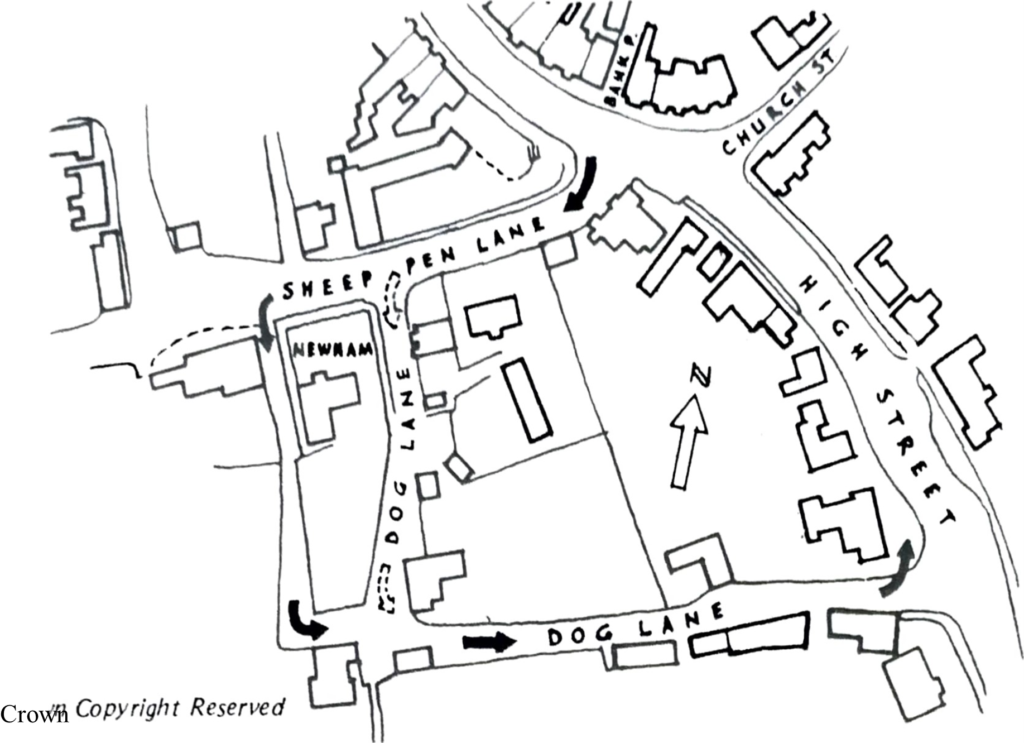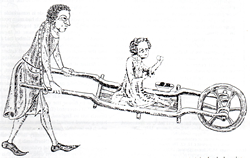High Street – South

Continue past the modernised front of Chalcraft to the 18th. century front of the estate agents offices, No. 53, its symmetry broken by the insertion of a second doorway. The next two shops, Nos. 51 and 51a, though much restored, the gable for example is a later addition, comprise an early 16th. century building which once had a continuous jetty.
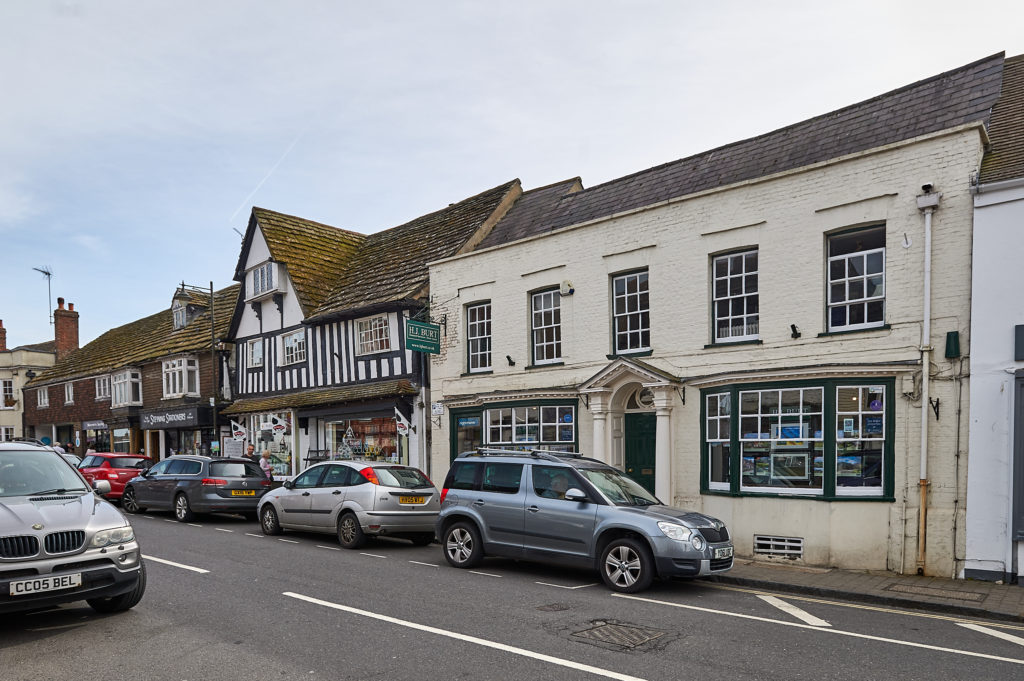
The next two shops are also timber-framed buildings with modem facades and the small supermarket has been rebuilt but fortunately the Horsham stone slabs were replaced in the roof. Many of these shops were of course built as residences but in the 19th. century when it became unfashionable to live in a timber fronted house, they were disguised by the imposition of a more recent style. The Chequer Inn, No. 41, was in fact a forerunner in this phase. The use of horse drawn coaches for passenger travel was started in the mid 17th. century and the Chequer and White Horse Inns became two important posting stops on the London-South Coast run.
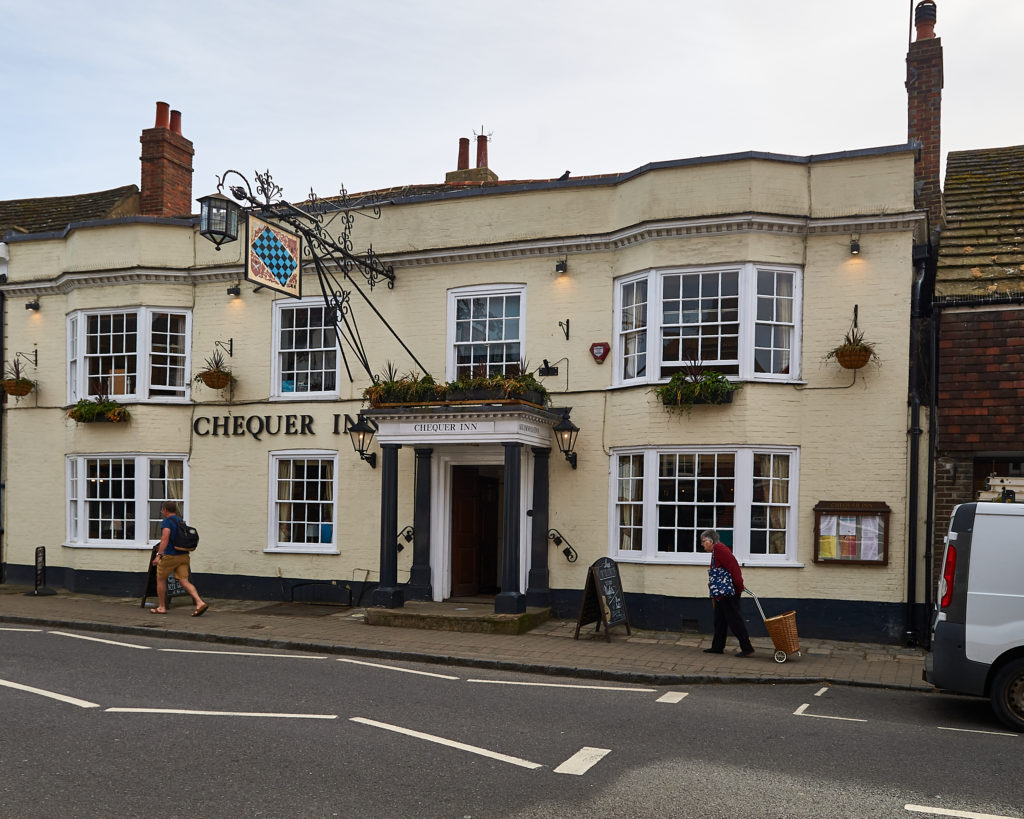
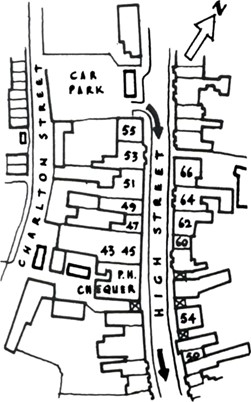
Then it was, that the Chequer hid its medieval timber by a late 18th. century brick façade to provide a more imposing hostelry for its fashionable travelling trade.
It is worth pausing here for a pint – they also serve coffee — to see the 15th. century interior. The fine wrought iron bracket and sign, made by Sussex craftsmen, is a great feature of the High Street.
There is a theory that the Chequer symbol indicates an association with smuggling but the more likely version reflects the use of the inn for business transactions when the markets were held in the High Street and the Chequer board was an aid to counting.
An archway leads into the Chequer Yard, once used by the coaches and horses of those earlier years. Take a look through the archway and in the windows of the half-timbered upper storey of the building on the left there are still to be seen some of the original Elizabethan glass leaded lights. They get less and less each year!
About the time that these buildings were being re-fronted a new type of hanging tile was introduced called the ‘mathematical tile’ which was designed with its lower part in imitation of brickwork. They are often difficult to detect but we have discovered that the stucco front of No. 52 was applied over a mathematical tile façade.
As you walk up the street fry to conjure up the scene (illustrated below) when the markets were held there. Sheep were folded in the street, cattle were herded by drovers, gypsy caravans and stalls lined the south side of the street, farm hands and dairy maids waited in front of the inns to be hired for the year; it must have been a noisy, animated and exciting scene.
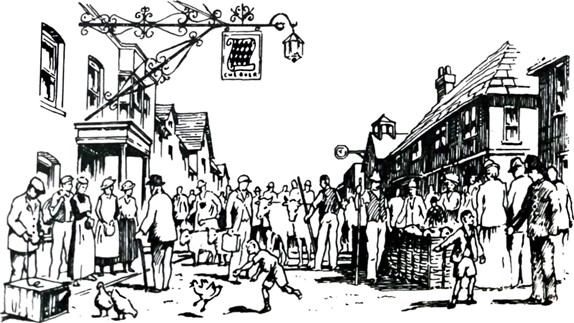
Of interest on the other side of the street are the several old carriage entrances, some with nicely carved brackets supporting the beams.
Beyond the Chequer Inn you come to the old Lloyds, a building which has been modernised but with a brick design which fits very well into the High Street facade. This had been bank premises since 1847 when Henty’s Agricultural Bank set up in business followed by Capital and Counties Bank until 1918 when Lloyds took over. The carved wheatsheaf from the old front of the first bank is now on the face of No. 62, the old Halifax offices on the opposite side of the street.
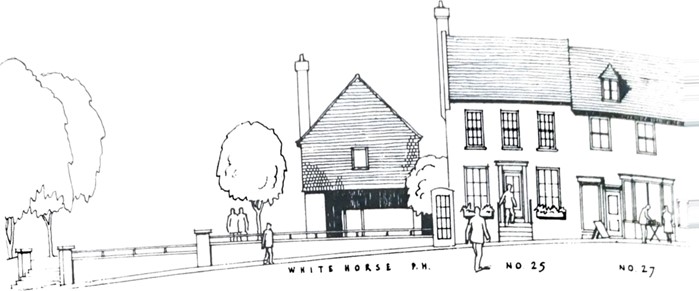
Across the road is the Post Office, another of the old timber framed buildings whose exterior belies its interior. Note the curious little face which has been carved on one of the beams inside. This building, together with the former butcher’s shop next door, were once the Swan Inn. The particularly interesting old carriage entrance still remains and also the mounting steps used by ladies to mount their horses.
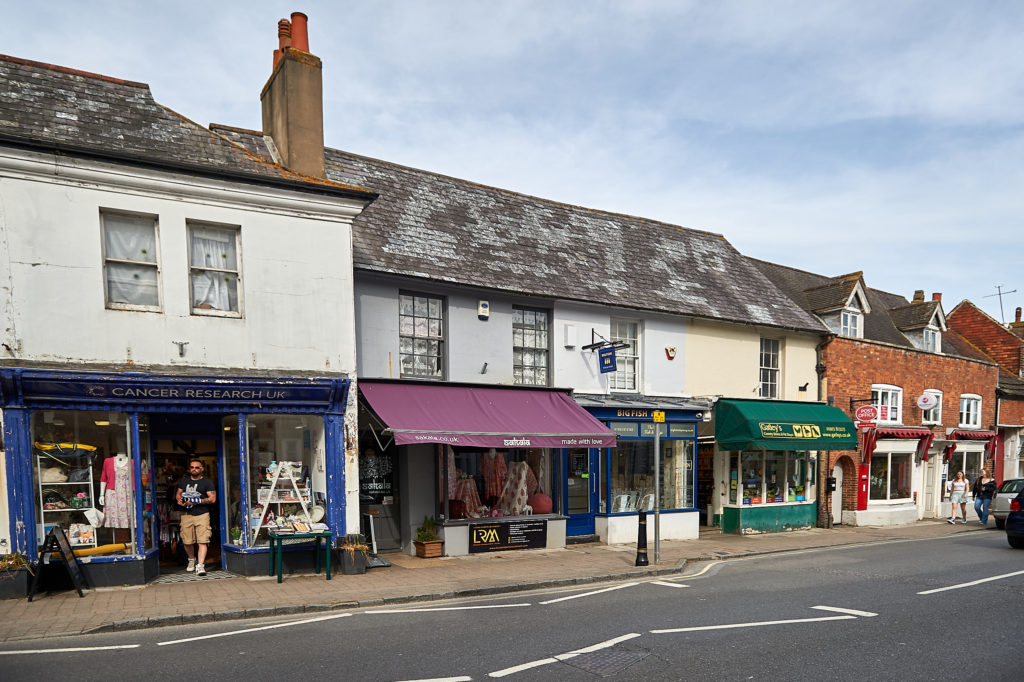
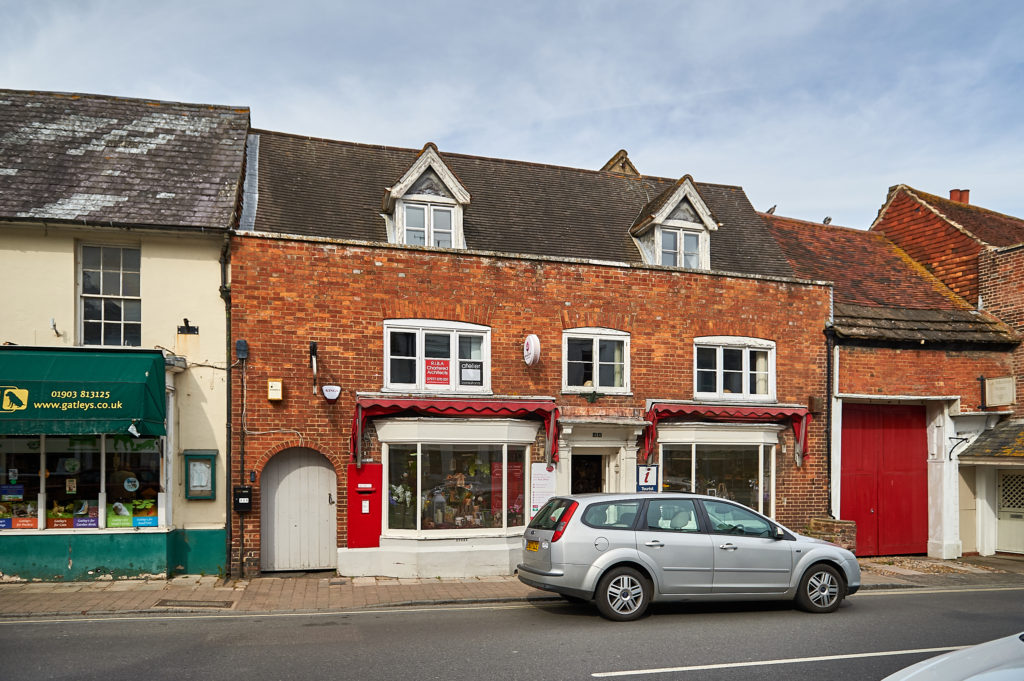
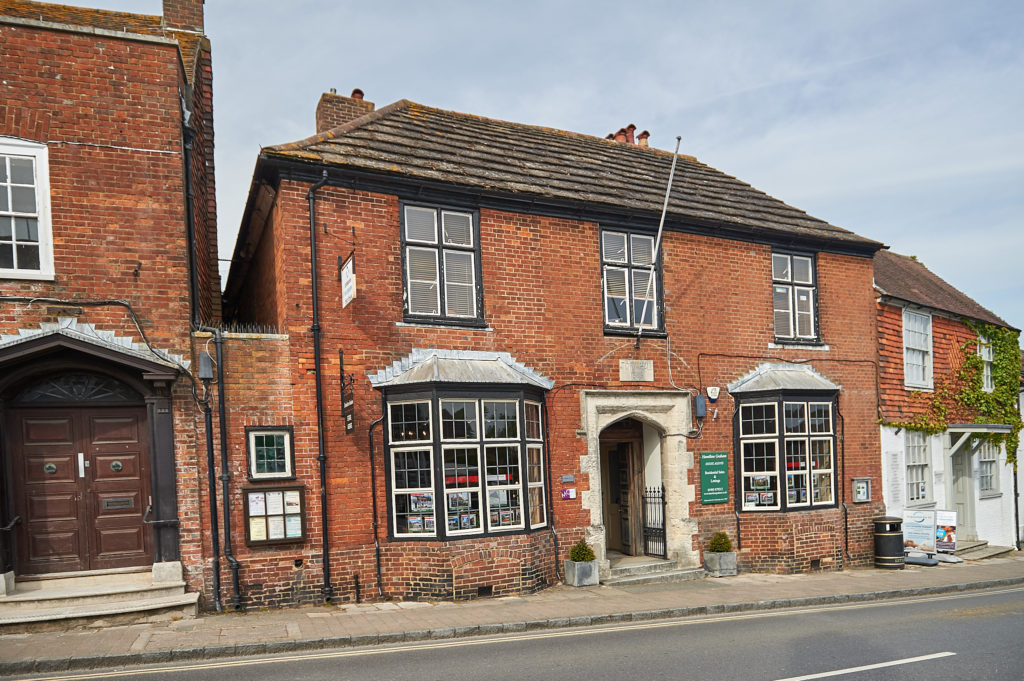
For many years No. 42 was a butcher’s shop retaining its old character even to the cashiers little ‘cubby hole’. Externally it has a nicely designed pedimented entrance to the entrance to the residential part of the building.
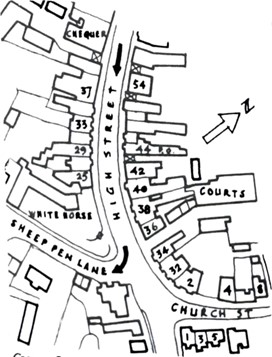
Continuing along the south side of the High Street you might well pass No. 33 without giving it more than a casual glance but this stucco façade conceals an old Wealden house. If you peeled away the present front you would find a timbered elevation similar to the Workhouse Cottages which you saw in Mouse Lane or the Wealden which you will shortly see in Church Street.
Next door is Lashmars, Nos. 29 and 31, which got its name from the then owners of Court Mill which you have seen. This was once a very pleasant Georgian elevation in facing bricks with simple detail and a panelled parapet but heavy bay windows were added later and one of these was subsequently replaced with the shop front.
The row of shops ends with two more timber-framed but disguised buildings. No. 27, which once probably had a jettied front, used to have steps up to its front similar to its neighbour, No. 25. During alterations to the latter building a cavalier’s hat was found.
You now reach the White Horse, our other old coaching inn. Sadly the White Horse suffered a disastrous fire in 1949 and the present hotel is an adaptation of the stables and outbuildings. The coaches ran from London to Worthing via West Grinstead, Ashurst and Steyning and in 1803 the charge for passengers was one shilling a mile ‘outside’ and half-a-crown ‘inside’.
Across the road from the former Barclays Bank Building No. 40 has an appropriate front in traditional materials with a Georgian bay window and pedimented portico entrance. Next to it is a building with a plaque over the front door, ‘Town Hall 1886’. In that year the Steyning Public Hall and Assembly Rooms Company was formed, and a hall was built behind the front building. Following a public dinner there in 1887 to celebrate Queen Victoria’s Golden Jubilee it was used for public functions until 1928 when the company went into voluntary liquidation and sold the buildings. Public use of the hall co continued but finally it was purchased by the County Council in 1959 and it then served as a Magistrates Court but since converted into residential use. The front part of the building is now used by a firm of estate agents together with the corner building. The latter was once yet another of Steyning’s public houses, the King’s Arms but later became the Steyning New Bank and the adjacent passage changed from Brewer’s Lane to Bank Passage.
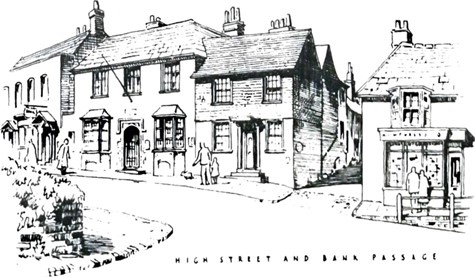
Please now turn right into Sheep Pen Lane (adjacent to the White Horse) and then press Next
